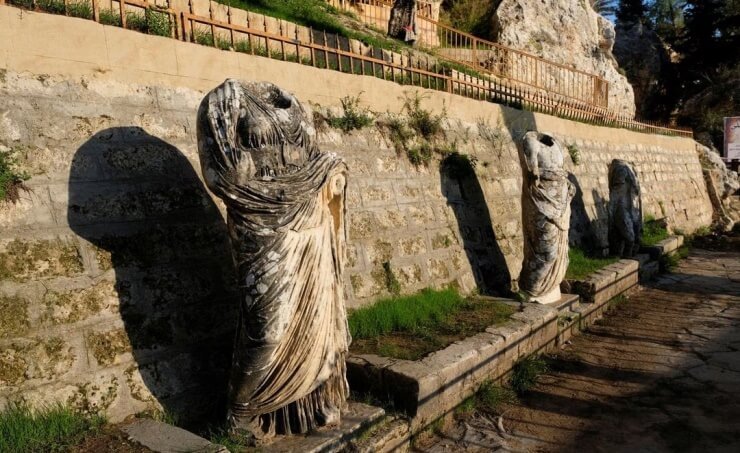In a tragic turn of events, the recent flooding that devastated Derna, Libya, had severe repercussions on the historical site of Cyrene, an ancient Greek city nestled in the eastern Libyan mountains. The calamitous floodwaters wreaked havoc on the city's ruins, but amid the destruction, they also unearthed hidden archaeological treasures. This article delves into the aftermath of the flood, which simultaneously inflicted damage on Cyrene's historic structures while unveiling a previously unknown Roman-era treasure trove.
The Unprecedented Flooding
Storm Daniel unleashed a deluge of rain, an unparalleled event since records were first kept in the mid-19th century, drenching the hills of eastern Libya. The unprecedented downpour resulted in a staggering one meter of rainwater, causing rivers and streams to swell to a dangerous magnitude. The flooding took a heavy toll on Derna, claiming the lives of thousands and leaving a trail of destruction in its wake. As the waters receded, the extent of the disaster became evident.
The historic city of Cyrene, locally known as Shehat, found itself at the mercy of this merciless deluge. Cyrene, which was a Greek colony and a prominent city in the ancient Hellenic world, later thrived under Roman rule until it was laid to waste by an earthquake in the year 365. These ancient ruins have long been a point of attraction for travelers, drawing visitors from across the globe since the 18th century.
The torrential floodwaters inundated the picturesque ruins of Cyrene, causing mud and rubble to accumulate, particularly in the Greek-era baths. These damages are extensive and will require specialized clearing and restoration efforts, as noted by Adel Boufjra, an official from the local antiquities department.
Libya flood disaster damaged ancient city but revealed new remains
Revealing Hidden Treasures
While the flooding has undoubtedly posed a considerable risk to Cyrene's historical heritage, it has, in an unexpected twist, unveiled an exciting archaeological find. The waters cleared away layers of earth and stone, revealing a previously undiscovered Roman drainage system. According to Boufjra, "The flooding has revealed a new site - a water canal that I believe dates back to the Roman era. It is a distinctive discovery for the city."
This newfound Roman-era drainage system offers archaeologists and historians a unique glimpse into the ancient city's infrastructure. The channel's design and purpose, previously obscured by centuries of accumulated debris, can provide valuable insights into how the city was built and managed during Roman times.
Preserving the Past
As the city of Cyrene grapples with the aftermath of this natural disaster, there is now an urgent need to balance the restoration efforts required to protect the existing historical structures with the opportunity to explore and document the newly revealed archaeological finds. The delicate task of preserving the past while uncovering its secrets has always been a challenge for researchers and preservationists.
The recent flooding in Derna, Libya, brought about a catastrophe that claimed numerous lives and severely impacted the historical site of Cyrene. While it caused damage to the city's ancient structures, it also unveiled a hidden gem - a Roman-era drainage system that has remained concealed for centuries. This revelation serves as a stark reminder of the fragile coexistence between nature's destructive power and humanity's enduring quest to uncover and preserve the secrets of the past. As restoration efforts commence, Cyrene's story continues, offering a glimpse into the enduring legacies of civilizations long gone.








